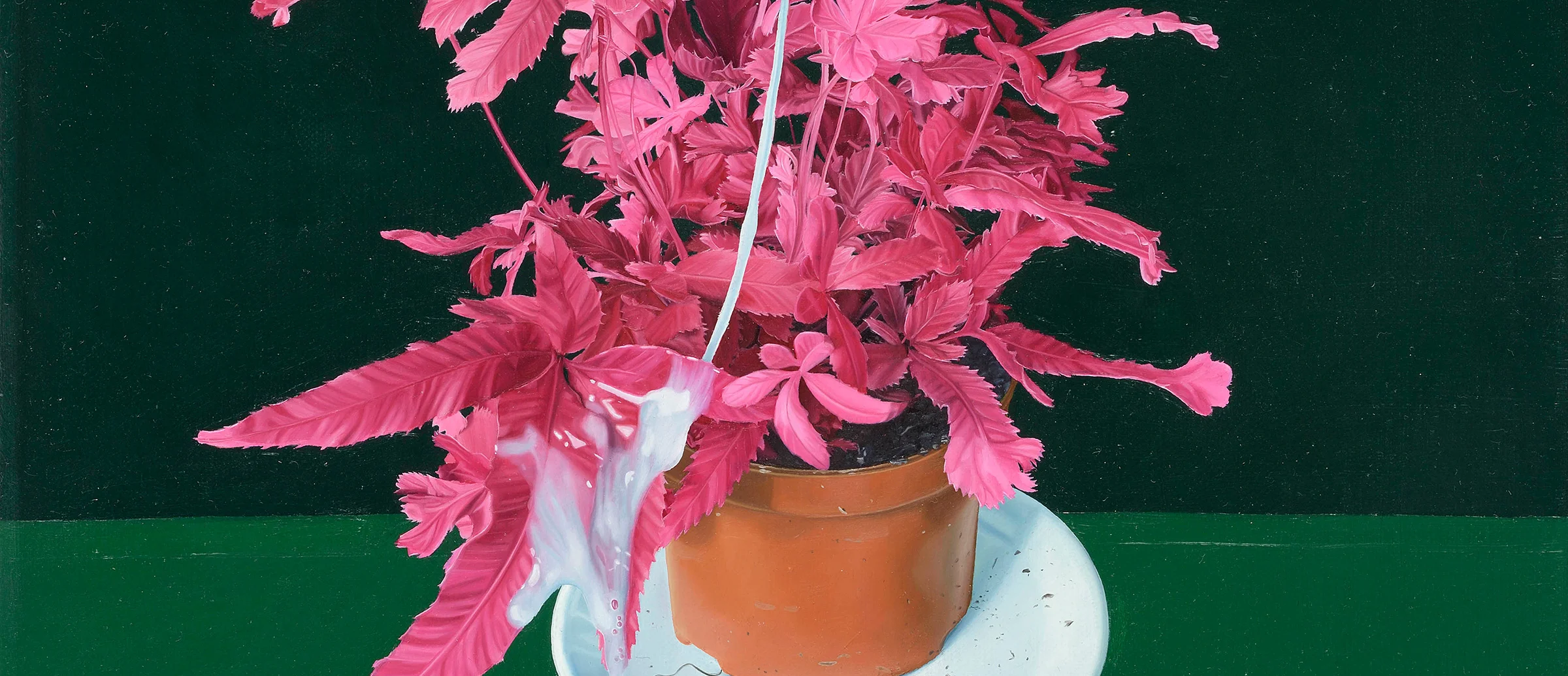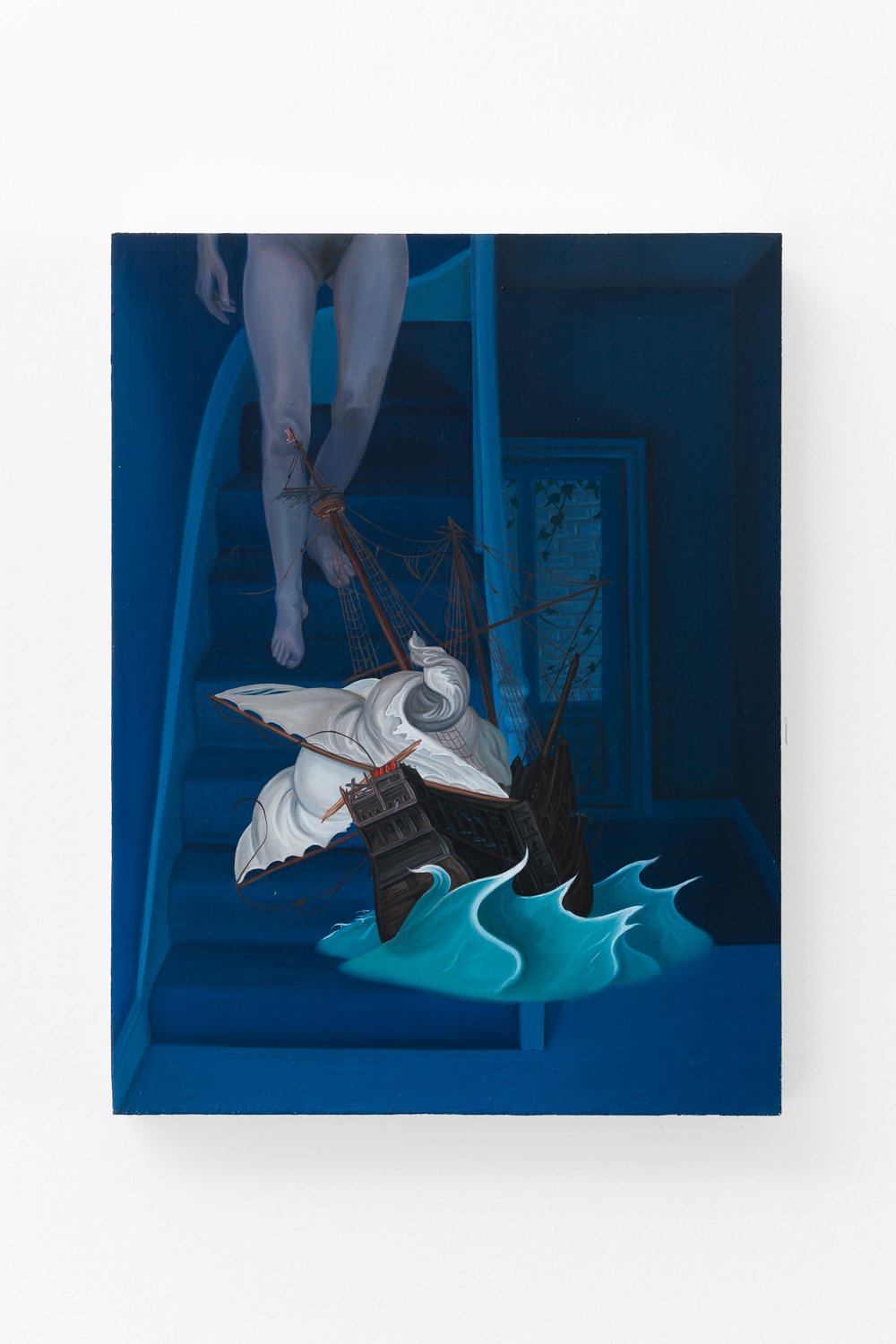SELECTED EXHIBITIONS:
‘INSTRUMENT IN A SPIRAL’, ALICE BLACK GALLERY, LONDON, UK, 2023
‘PARALLEL MOTION’, CYLINDER, SEOUL, SOUTH KOREA, 2022
‘A CURTAIN MADE OF WOOD’, CYLINDER, SEOUL, SOUTH KOREA, 2021
‘BEHIND TIRED EYES’, ALICE BLACK GALLERY, LONDON, UK, 2020
‘SLIPPERY GAZE’, ALICE BLACK GALLERY, LONDON, UK, 2018
‘JUICY BITS’, COB GALLERY, LONDON, UK, 2017
‘ART BASIL’, COB GALLERY, LONDON, UK, 2016
Tristan Pigott (b. 1990) lives and works in London, UK. Pigott holds a BA from Camberwell College of Arts (2009-2012) and an MA in Sculpture from the Royal College of Art (2017-2019). Pigott has exhibited throughout the UK, Europe, the United States, South Korea, and Nigeria. Notable exhibitions include ‘Instrument in a Spiral’, Alice Black Gallery, London, (2023); ‘Parallel Motion’, Cylinder, Seoul, South Korea (2022); ‘Juicy Bits’, Cob Gallery, London (2017); ‘Dead Natural’, Cob Gallery (2015); ‘Yellow Sun: The New Contemporaries’, Lagos/Port Harcourt, Nigeria (2014) and ‘Hyperion’, New York, USA (2016). Pigott has been the recipient of prestigious awards including the Evening Standard’s New Art Power List (2020), the Evening Standard Young British Artist of the Year Award (2019), Wonderland Talent Portfolio (2019), and was shortlisted for the BP Portrait Award (2015).
Pigott’s practice is an integrated synthesis of painting, sculpture, and installation through which he explores the hybrid nature of perception. Removing painting from its usual, safe, wall-based mount and taking it beyond the frame, Pigott creates liminal landscapes attesting to the three dimensionality of the medium activated upon display. Pigott’s witty and subversive critique on contemporary culture is contextualised within our increasingly straddled position between the real and the virtual. Taking his contemporaries and their daily lives as his subjects, Pigott accumulates simulacra probing the construction of personal identity and the hierarchies of illusion and reality generated through the coalescence of the natural and artificial. Pigott’s figurative portraits and Vanitas inspired compositions conflate the hyper-real, surreal, pop, and painterly; mining art history and overlaying it with references from popular culture and the internet, Pigott traces the visual lineage that has brought us to where we are now. You are as likely to find a reference to a work found in the National Gallery, as you are a reference to a fashion mag, John Wayne cowboy film, google maps, drones, and satellites. Pigott refers to this constant vaulting between real and online existence as “ocular fatigue”.
Throughout his work, Pigott playfully muses on the benefits of technology, such as community, interconnectivity, visual stimulation, and the possibility for new creative outlets. Pigott parodies the way big tech vies for our attention. He links the methods of today’s design architects to more rudimentary tactics of distraction, trap and capture employed by the great masters of the past, such as Hans Holbein, Angolo Bronzino, Hieronymus Bosch, Bartholomeus Bruyn the Elder and Juan Sanches Cotan. In drawing these parallels through pigment he points out that while such tactics might be amplified today, they are in fact nothing new, reasserting the place of art in our digitally dominated landscape. “I predominantly paint in this kind of figurative, illusionistic style to counteract sense of disembodiment brought about by digital technology.” In our era of Zoom calls, 24hr news reels, and infinite social media scrolling, Pigott shows the importance of art as a real, tangible return to reality which, like human contact, is best experienced in the flesh.










































